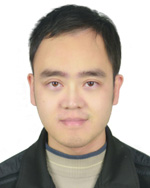1. Understanding the neuronal computation of facial identity in IT. Faces are very important objects for the animal, and previous studies discovered a subnetwork of IT, the face patch system, specialized for face processing. Cells in face patches were shown to code facial identity independent of accidental changes, however the detailed computation implemented by face patch neurons are still not clear. Our goal is to construct a computational model as close as possible to simulate the function of face patch neurons. So far, most of our knowledge on these cells has been obtained by presenting simple un-occluded facial images to the monkey. To better constrain the model, we will expand the set of images to include more variations, such as occlusion, clustering and scrambling—such variations may or may not change the responses of face cells, and our model should simulate real cells in all cases. After we obtain such a model, we could perform in-silico analysis to understand how facial identity is computed in detail.
2. Understanding the representation of objects in IT. Faces are very special objects: they generally have similar shapes but we are able to identify subtle changes in faces. The space of all objects is much more complex and heterogeneous than face space, and the representation of general objects in IT remains a big mystery. The key question we want to address is: what are the factors governing the organization of objects in the responses of IT cells. For example, two very general factors have been proposed: the semantic meaning of the object (such as animate/inanimate objects) and the shape of the object (such as roundish/square objects)—furthermore, both factors could be further decomposed into more specific features. To explore this question, we will first construct a computational model of IT cells similar to face cells, and then test different possible factors in the model. The likely candidates screened by the model will be further tested on cells in the monkey brain.

Investigator